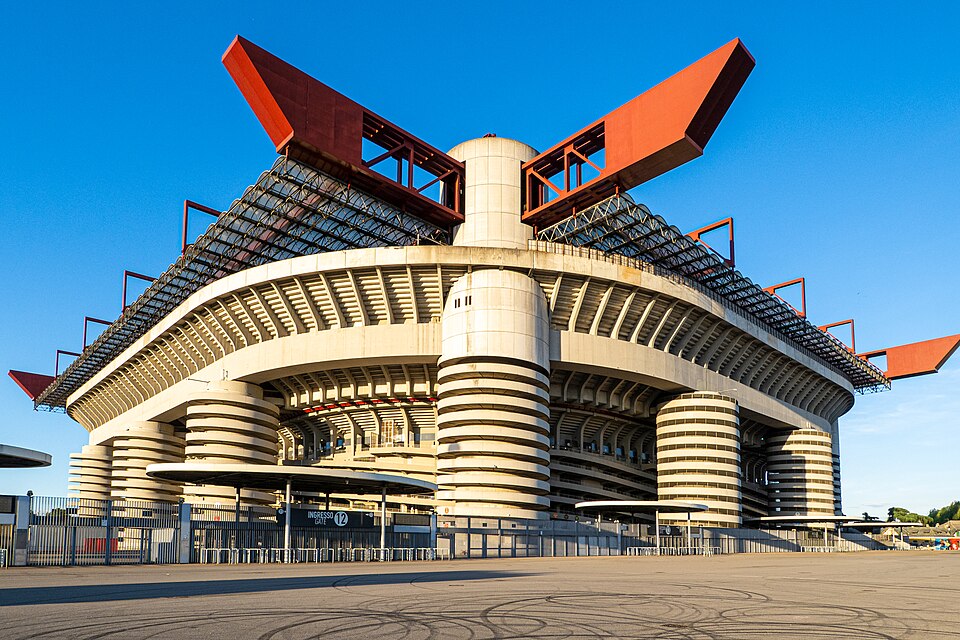Milan`s iconic San Siro stadium, a colossus of football history, finds itself at the heart of a contentious battle, not on the pitch, but in the courtrooms. A prominent local activist has launched a multi-pronged legal challenge, questioning the very feasibility and transparency of the proposed €1.2 billion sale and redevelopment plans involving AC Milan and Inter Milan, citing significant financial liabilities of both clubs.
A Legacy Under Threat
Known affectionately as «La Scala del Calcio» or the «Grand Old Lady,» the Giuseppe Meazza Stadium, more commonly San Siro, has been a venerable shrine for generations of football enthusiasts. Its towering structures have witnessed countless triumphs, heartbreaks, and legendary matches, making it far more than just a venue – it`s a piece of Milanese and global football heritage. However, its future is currently shadowed by plans for potential demolition or drastic transformation, a move strongly advocated by both Inter and AC Milan who seek a modern, club-owned stadium.
The Advocate`s Alarm: Debt vs. Development
Stepping into the fray to defend San Siro`s existing form is Luigi Corbani, founder of the «Sì Meazza» Committee. Corbani has not just vocalized his concerns; he has taken concrete legal action. He has filed formal complaints with the Public Prosecutor`s office, the Administrative Court (TAR), and the Court of Accounts, aiming to halt what he describes as a «fake» operation regarding the stadium`s sale and surrounding areas to the two Milanese giants.
Corbani`s central argument hinges on a fundamental financial query: How can clubs burdened with substantial debts afford such an enormous investment? He starkly highlighted the reported figures:
- Inter Milan: Approximately €750 million in debt.
- AC Milan: Approximately €350 million in debt.
Against these figures, the proposed investment for the stadium operation stands at a staggering €1.2 billion. «How do they manage to invest 1.2 billion euros in the stadium operation? Only Sala and Scaroni know,» Corbani quipped, implicitly questioning the financial logic and transparency of the deal, pointing fingers at Milan`s Mayor Giuseppe Sala and AC Milan`s Chairman Paolo Scaroni.
«The operation for the sale of the San Siro stadium and its areas to Inter and Milan is fake. Inter has debts of 750 million and Milan of 350 million, so how do they manage to invest 1.2 billion euros in the stadium operation? Only Sala and Scaroni know.» — Luigi Corbani
The Implications: Beyond the Pitch
This legal challenge elevates the debate from mere architectural preference to serious questions of financial propriety and public interest. If the clubs are indeed carrying such significant liabilities, how is a €1.2 billion investment viable without putting further strain on their already delicate balance sheets, or potentially leveraging future public assets or guarantees? The accusation of a «fake» operation implies a deliberate misrepresentation or an unrealistic financial model, which, if proven, could have severe repercussions for all parties involved.
The situation underscores a broader trend in European football where clubs seek to modernize infrastructure to boost revenue, but it also highlights the increasing complexity and financial scrutiny surrounding such large-scale projects, especially when public assets like San Siro are involved. The beloved stadium is not just a commercial entity; it holds immense cultural and historical value for the city of Milan and its inhabitants.
What Lies Ahead?
As the legal processes unfold, the future of San Siro remains shrouded in uncertainty. Corbani`s bold move forces a more rigorous examination of the financial underpinnings of the proposed deal, demanding a level of transparency that, in his view, has been conspicuously absent. For fans, citizens, and stakeholders alike, the outcome of this legal battle will determine not only the fate of a legendary stadium but also set a precedent for how major urban development projects, particularly those intertwined with significant cultural heritage, are handled in the face of financial scrutiny.
The ball is now firmly in the courts` possession, and the world watches to see if the «Grand Old Lady» will stand testament to her history, or succumb to the pressures of modern football`s economic demands.

